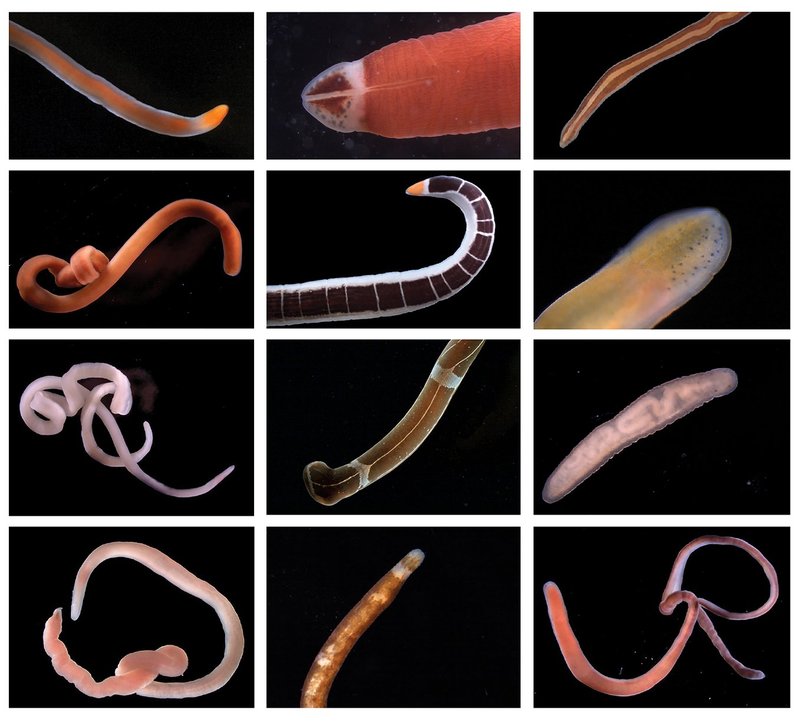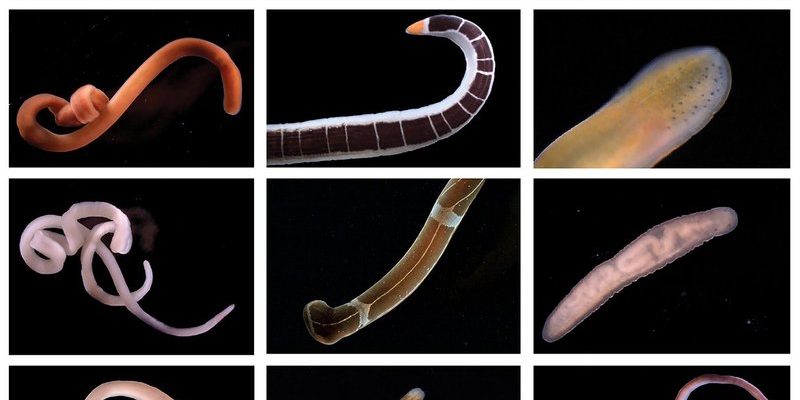
Imagine you’re walking on a beach, feeling the warm sand under your toes in a tropical paradise, and then picturing a rocky shore in a cooler climate. The conditions of these two environments shape not just the scenery but also the life forms that thrive there. Ribbon worms have adapted to their specific surroundings, and understanding these differences can help us appreciate the incredible diversity of marine ecosystems.
So, let’s dive into the world of ribbon worms and explore how these unique creatures behave and thrive in both cold and tropical waters.
What Are Ribbon Worms?
Ribbon worms, or **Nemerteans**, are elongated, soft-bodied worms that can grow quite long—some reaching up to 30 meters! Despite their slimy look, they play an essential role in their ecosystems. They’re known for their striking colors and unique feeding methods. Most have a **proboscis**, a retractable tube that can shoot out to capture prey like small fish and invertebrates.
These worms come in various colors, such as bright reds, yellows, and blues, making them another beautiful piece of the ocean’s puzzle. You might see them peeking out from under rocks or wriggling through the sand. They’re also not very picky eaters; they’ll munch on everything from **tiny shrimp** to **dead organic matter**.
Habitat Differences: Cold Water Vs. Tropical Waters
The ocean is divided into different temperature zones, and ribbon worms adapt to the conditions within these areas. Cold-water environments are typically found in areas near the poles or deep ocean trenches, while tropical waters are warmer and often vibrant with life. Let’s look at how each habitat shapes the ribbon worms that call it home.
Cold-Water Ribbon Worms
In cold waters, ribbon worms tend to be larger and more resilient. The cooler temperatures lead to slower metabolic rates, meaning these worms conserve energy and grow more slowly. They thrive in deeper parts of the ocean, where the temperatures can be freezing and where more organic matter settles.
Cold-water ribbon worms come equipped with various survival strategies. For instance, they can often tolerate lower oxygen levels, which can be crucial in these environments. Plus, their tough outer skin helps protect them from predators and harsh conditions such as strong currents and lower light levels.
Tropical Water Ribbon Worms
On the flip side, tropical ribbon worms showcase a different set of characteristics. These guys are often **more colorful** and smaller than their cold-water cousins. The warm temperatures mean they can grow rapidly and reproduce more frequently, which leads to more vibrant populations.
Tropical waters are typically rich in nutrients, allowing these worms to feast on plenty of prey. With their fast-paced lifestyles, they adapt to their environment’s constant change, often hiding within coral reefs or in sandy bottoms to evade predators. Their vibrant colors help them blend into the lively backdrop of coral formations, adding another layer to marine life’s beauty.
Feeding Habits: Adaptations to Environment
One of the most striking differences between ribbon worms in cold and tropical waters is their feeding habits. Despite both groups being carnivorous, their diets often vary based on availability and competition.
Feeding in Cold Waters
Cold-water ribbon worms tend to feed on larger prey like crustaceans and fish. They have evolved a more robust and powerful proboscis to capture these larger meals. The slower metabolism means they don’t need to eat as frequently, allowing them to wait patiently for their prey to pass by.
Additionally, their environments might lead them to consume more detritus—decaying organic matter—especially in deeper waters where food sources can be scarcer. This versatility helps them survive in less hospitable conditions.
Feeding in Tropical Waters
In contrast, tropical ribbon worms often focus on smaller, more abundant prey like zooplankton and tiny mollusks. The warmer water temperatures provide a constant flow of nutrients, making it easier for them to find food. Their **rapid feeding style** allows them to take advantage of the plentiful resources.
Tropical species also tend to use their colorful appearances to lure unsuspecting prey, showcasing yet another marvelous adaptation to their vibrant environment. It’s like they’re putting on a show just to catch dinner!
Reproduction and Lifespan Variations
The reproductive habits of ribbon worms also reveal differences shaped by their environments.
Cold-Water Reproduction
In colder waters, ribbon worms tend to have longer lifespans, sometimes living for several years. They reproduce sexually and often have a slower rate of reproduction. The seasonal changes in their environment can lead to specific breeding periods, where they might spawn in the spring when conditions start to improve.
These worms typically have fewer offspring, but they invest more energy into each, creating strong, well-developed larvae that can withstand the colder environment.
Tropical Reproduction
Conversely, tropical ribbon worms have shorter lifespans, usually just a year or two, but they reproduce in larger numbers. This high turnover rate allows them to stay balanced in their vibrant, competitive ecosystems. They can reproduce both sexually and asexually, providing them with various ways to maintain their populations in rapidly changing environments.
Their eggs often hatch sooner, and the young tend to grow quickly, taking advantage of the abundant resources in tropical waters. It’s a fast-paced life that fits perfectly with their surroundings.
Ecological Roles and Importance
Both cold and tropical ribbon worms play crucial roles in their ecosystems. Let’s explore how they contribute to the health of their respective environments.
Cold-Water Ecosystem Contributions
In cold waters, ribbon worms help decompose organic matter by breaking it down and recycling nutrients back into the ecosystem. This process supports a diverse range of marine life by keeping the nutrient cycle alive. Their presence can indicate the health of colder marine environments, as they are sensitive to changes in water quality and temperature.
They also serve as prey for larger animals, ensuring they play a critical role in the food web.
Tropical Ecosystem Contributions
In tropical waters, ribbon worms contribute to biodiversity by serving as both predator and prey. Their colorful presence adds to the richness of coral reefs, and their feeding habits help keep populations of smaller organisms in check.
Moreover, they play a role in nutrient cycling, promoting the overall health of the reef ecosystem. Their fast reproduction rates can help stabilize the food web, ensuring a balance between various marine species.
Final Thoughts: The Wonders of Ribbon Worms
Whether in cold, dark waters or warm, sunny reefs, ribbon worms exemplify the beauty and complexity of marine life. Their adaptations highlight the wonders of evolution, showing how species can thrive in vastly different environments.
Understanding these creatures helps us appreciate the delicate balance of ecosystems and the importance of protecting our oceans. Next time you find yourself near the coast or daydreaming about far-off beaches, take a moment to think about the intriguing ribbon worms that call these waters home. They’re just one of the many reminders of how diverse and vibrant life can be, no matter the conditions!

